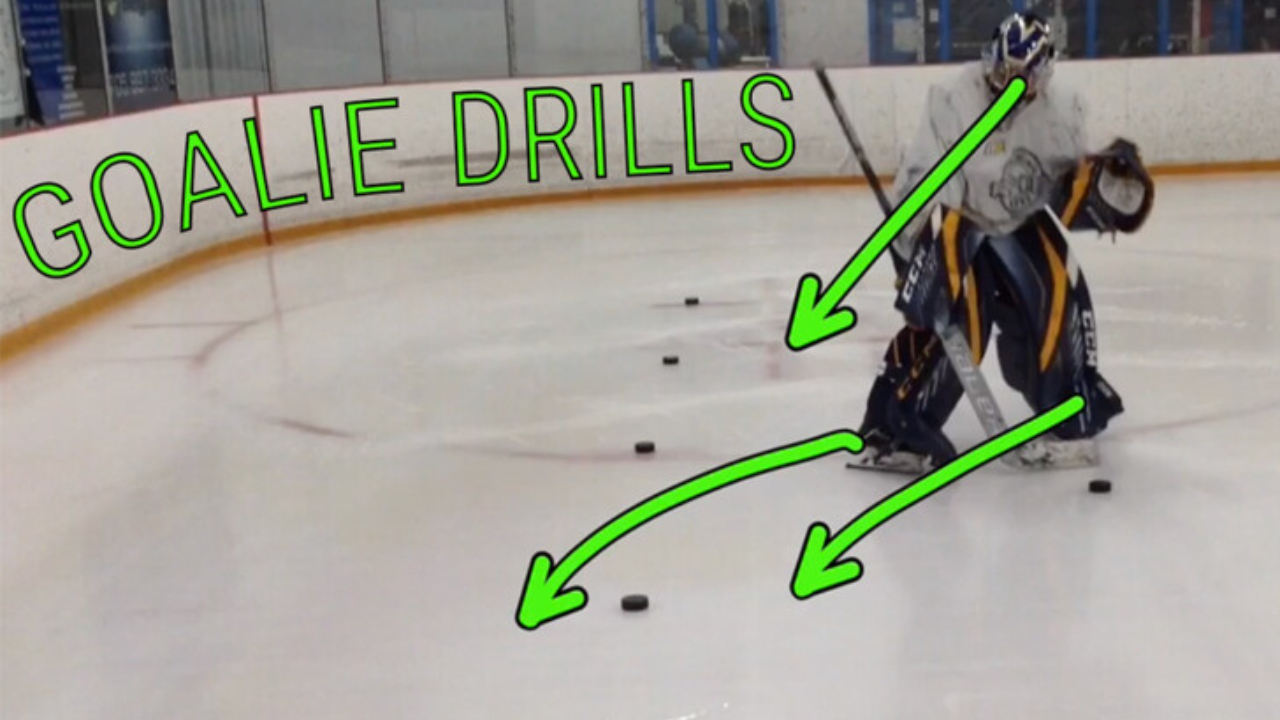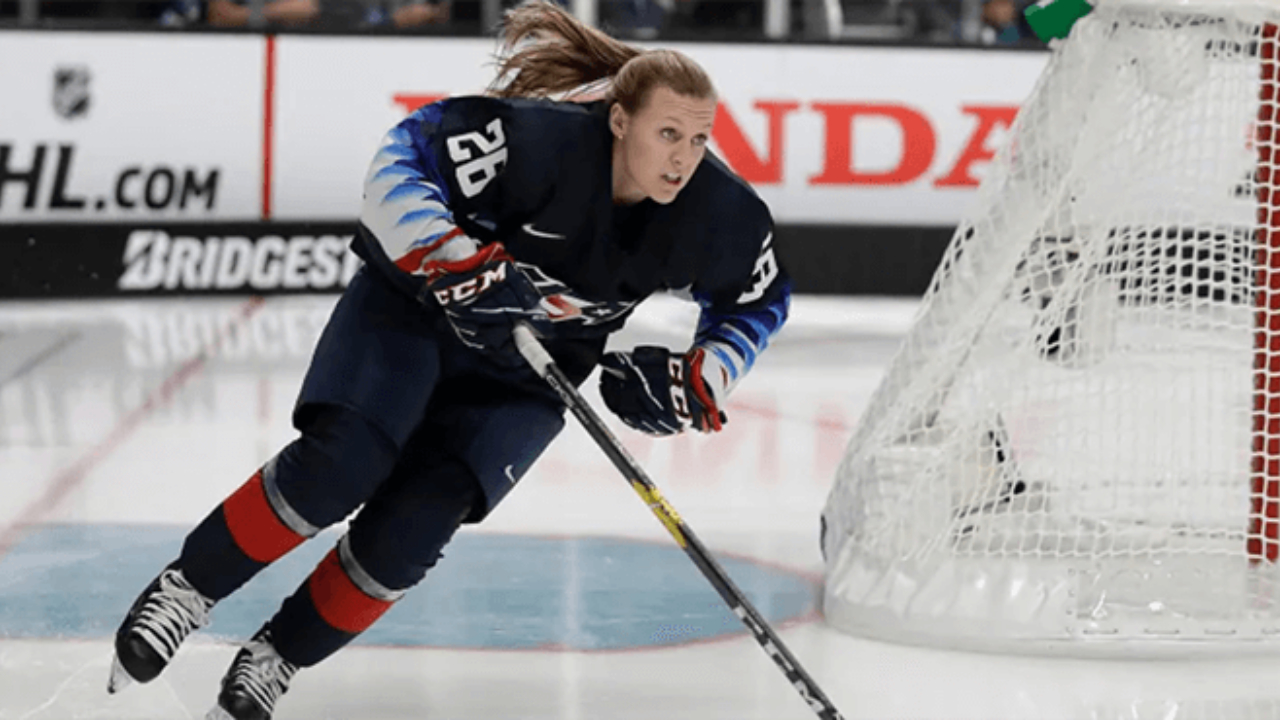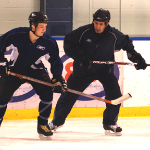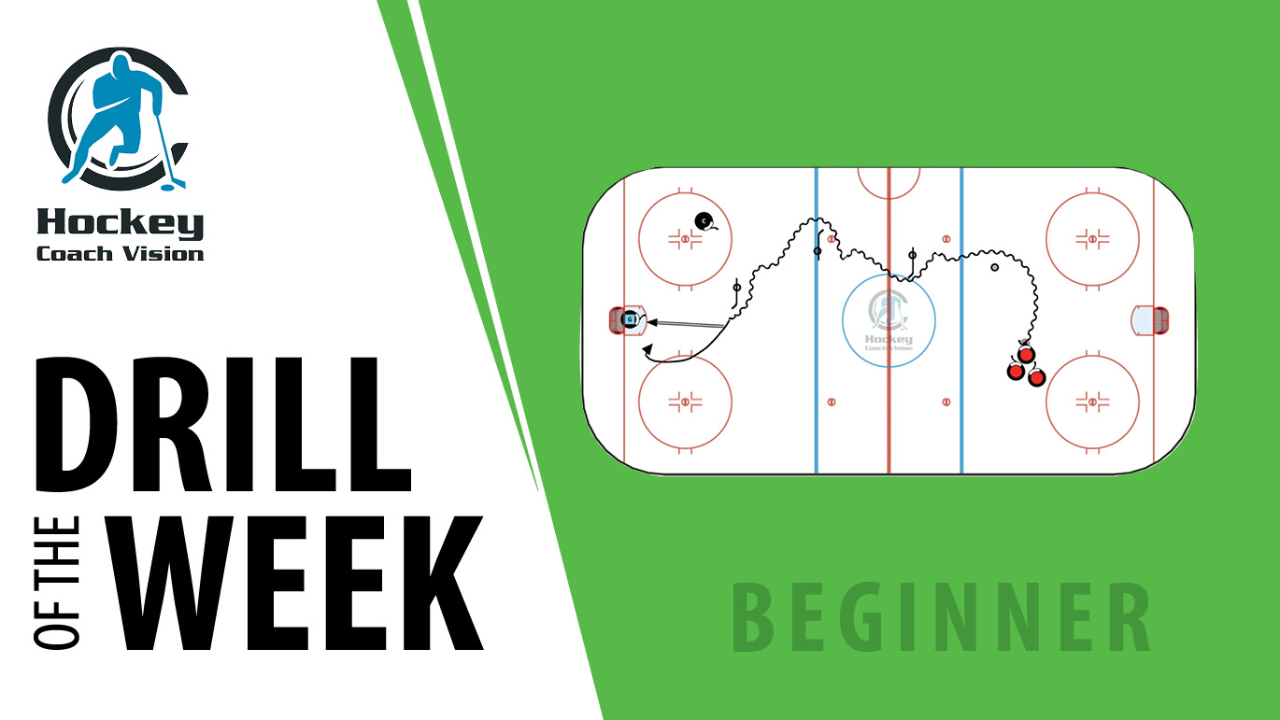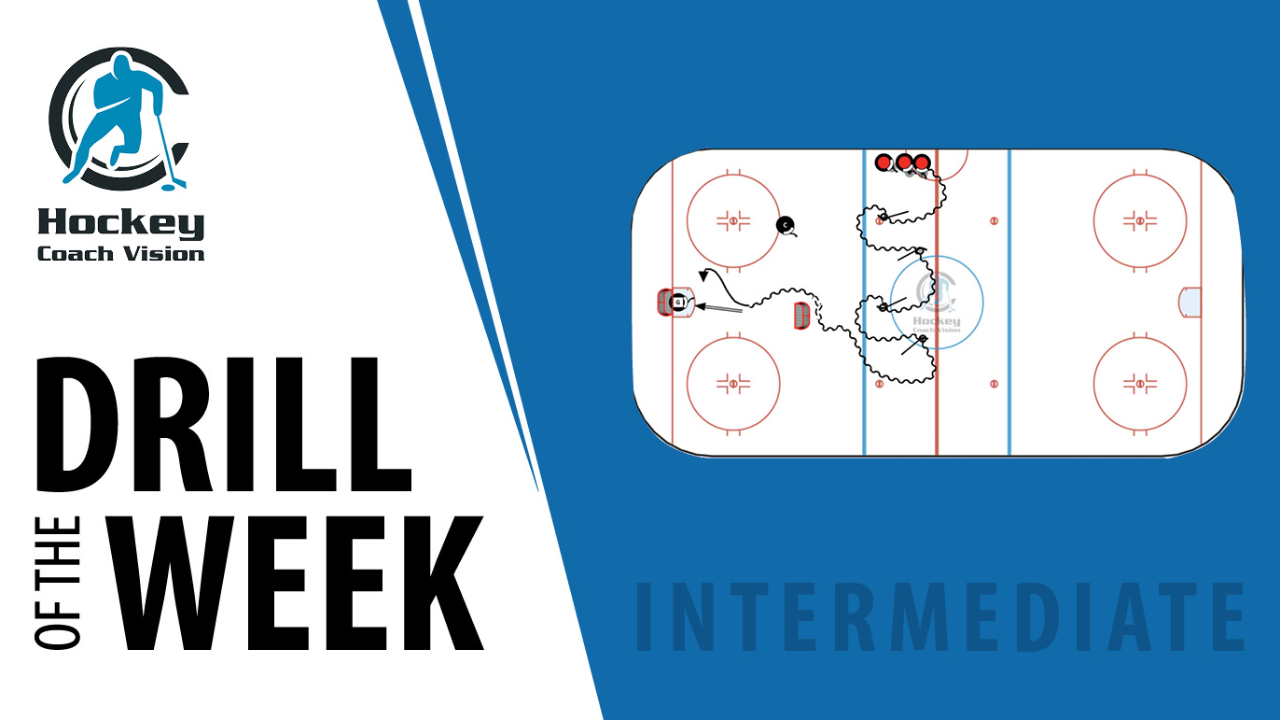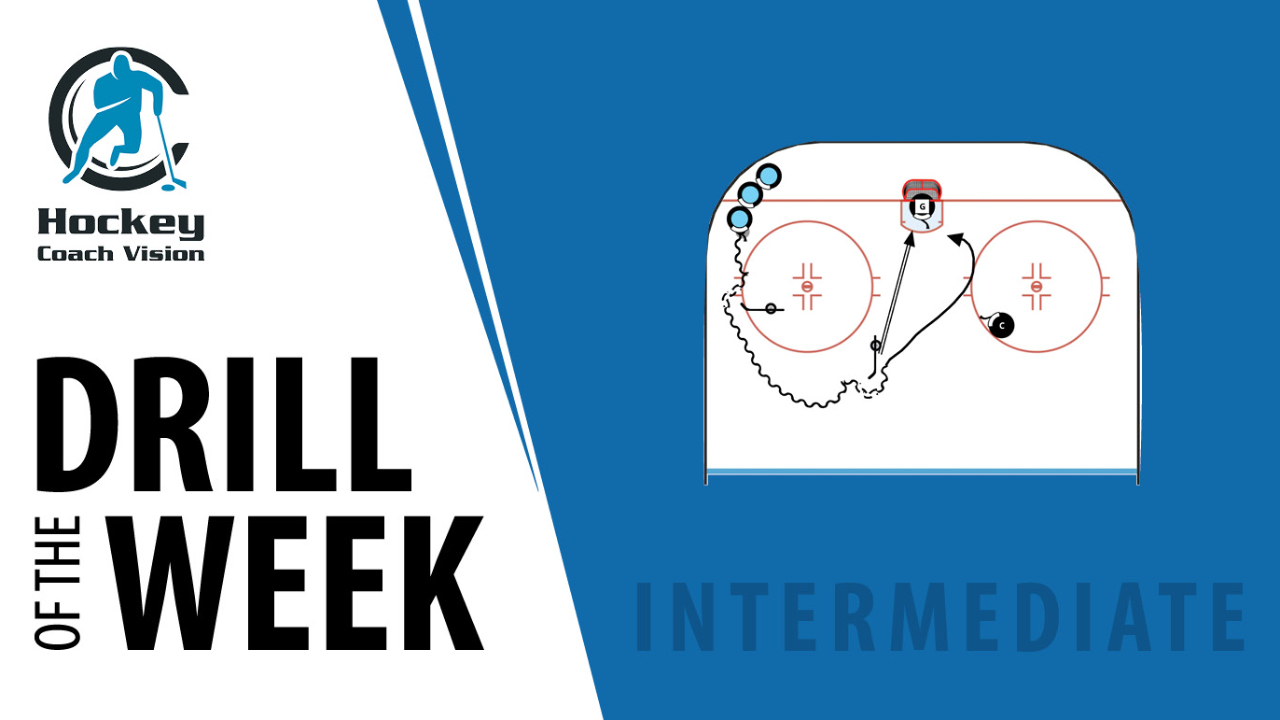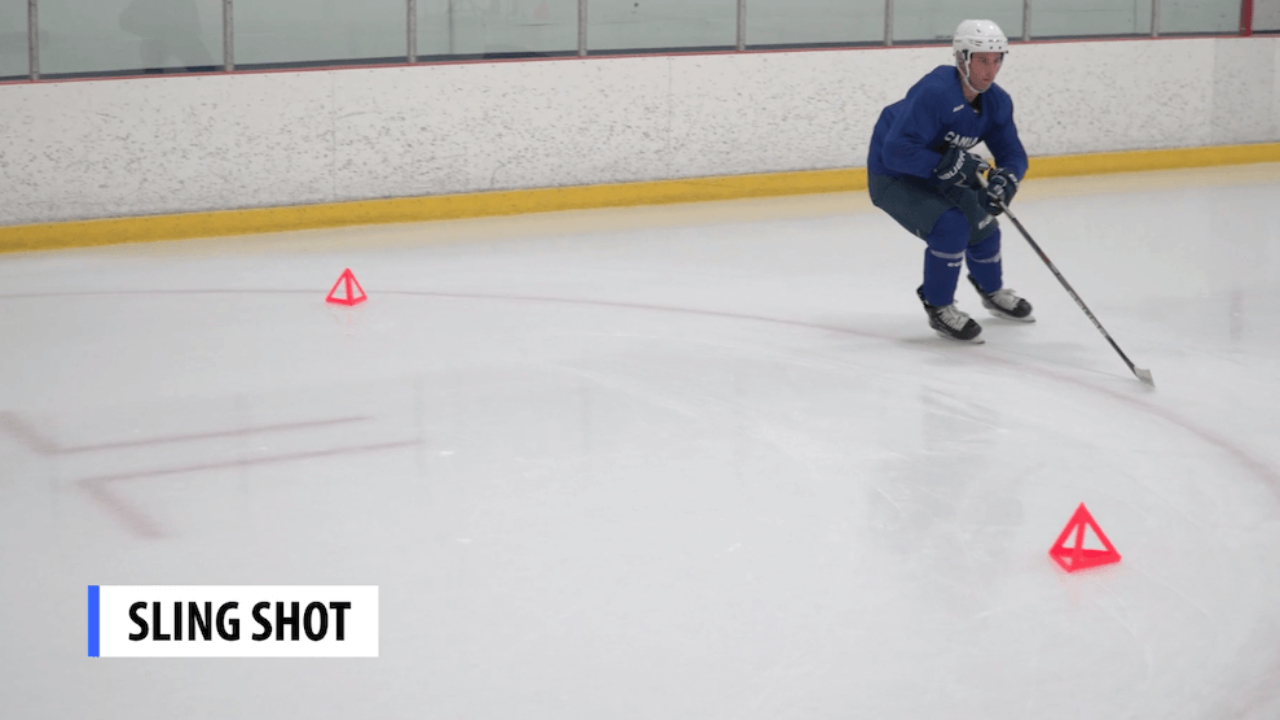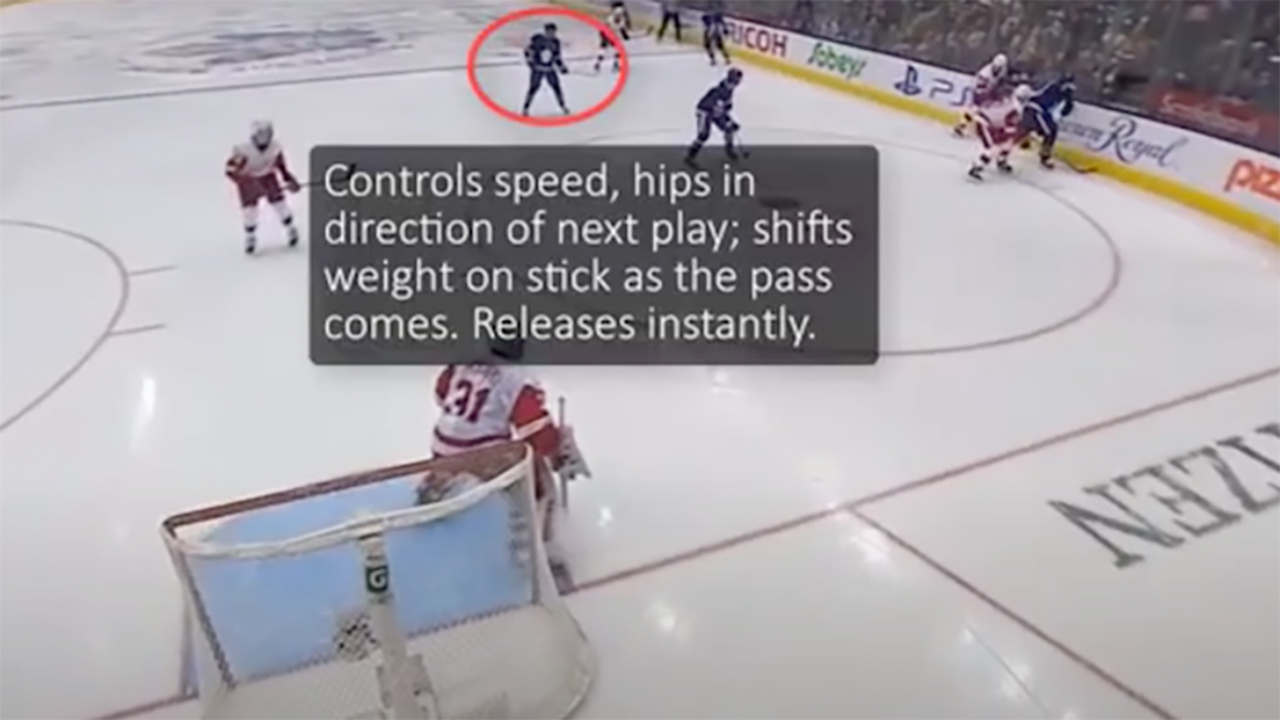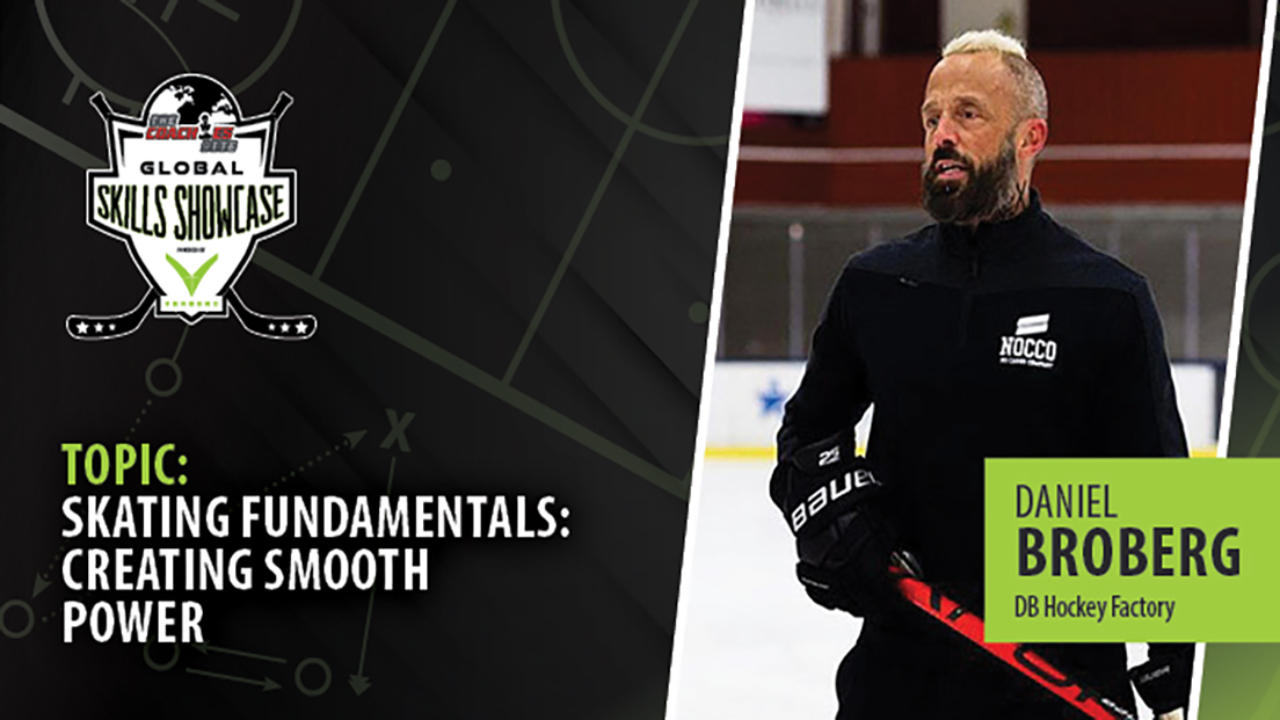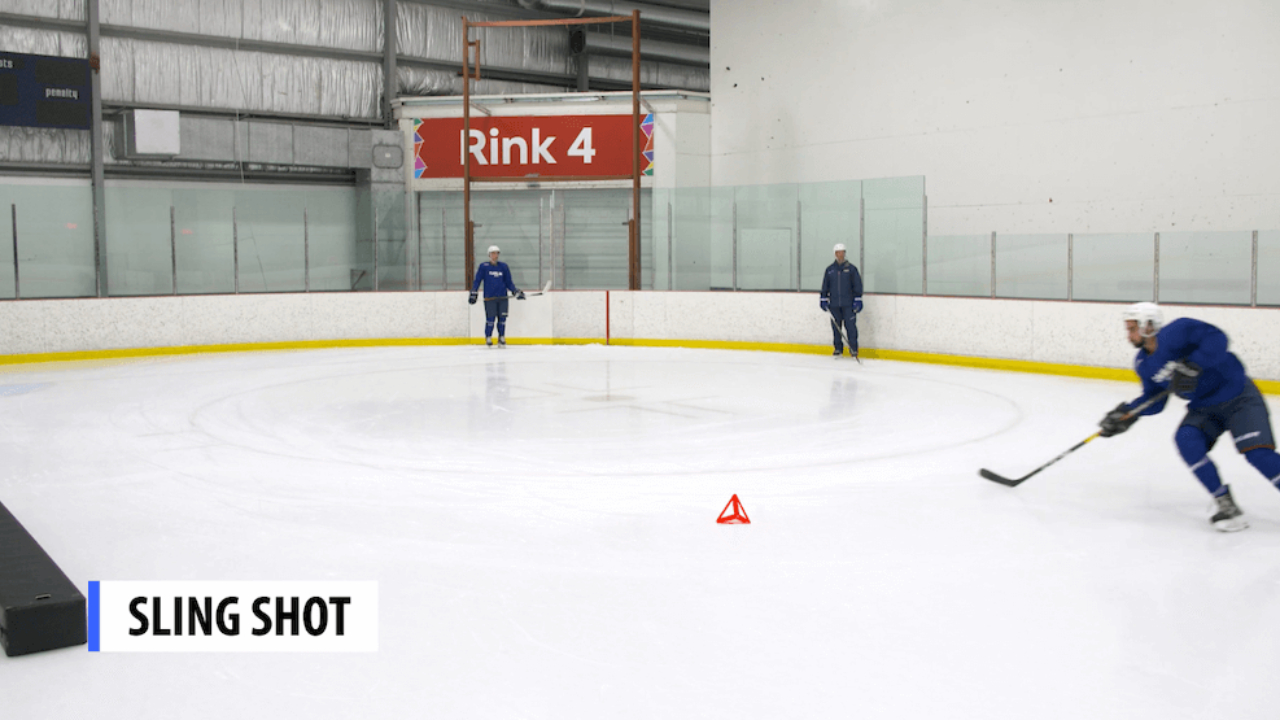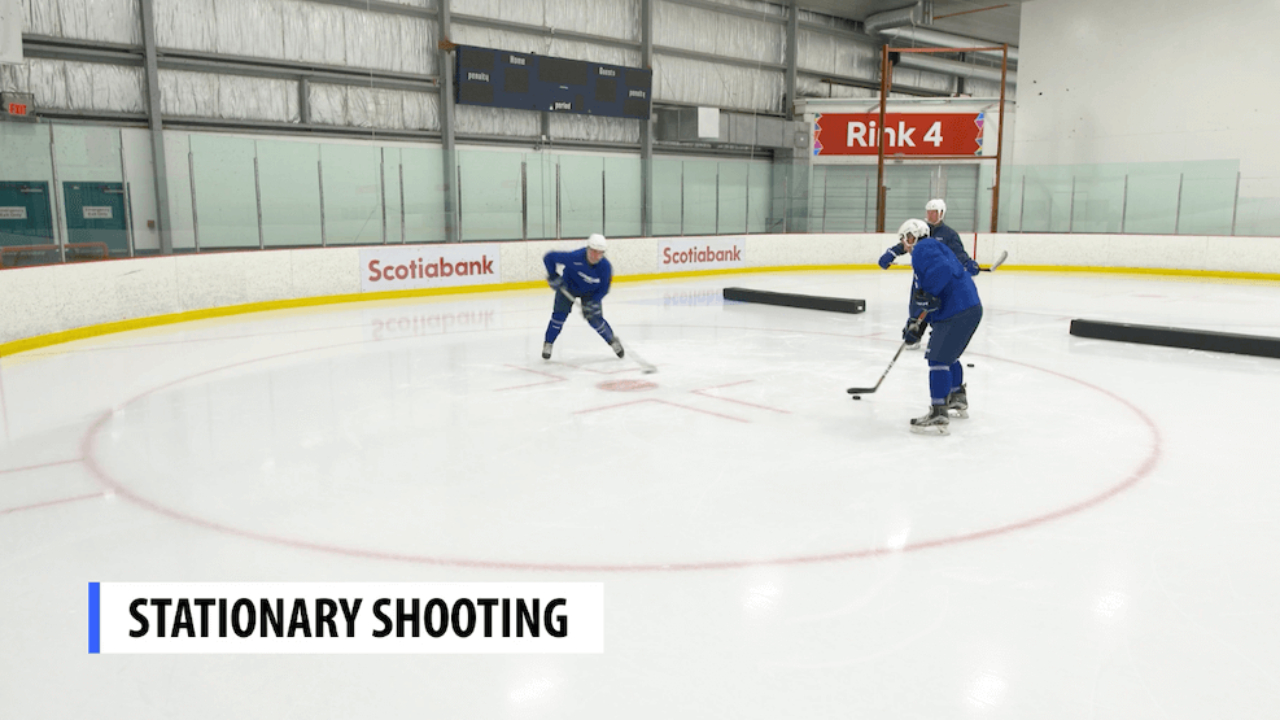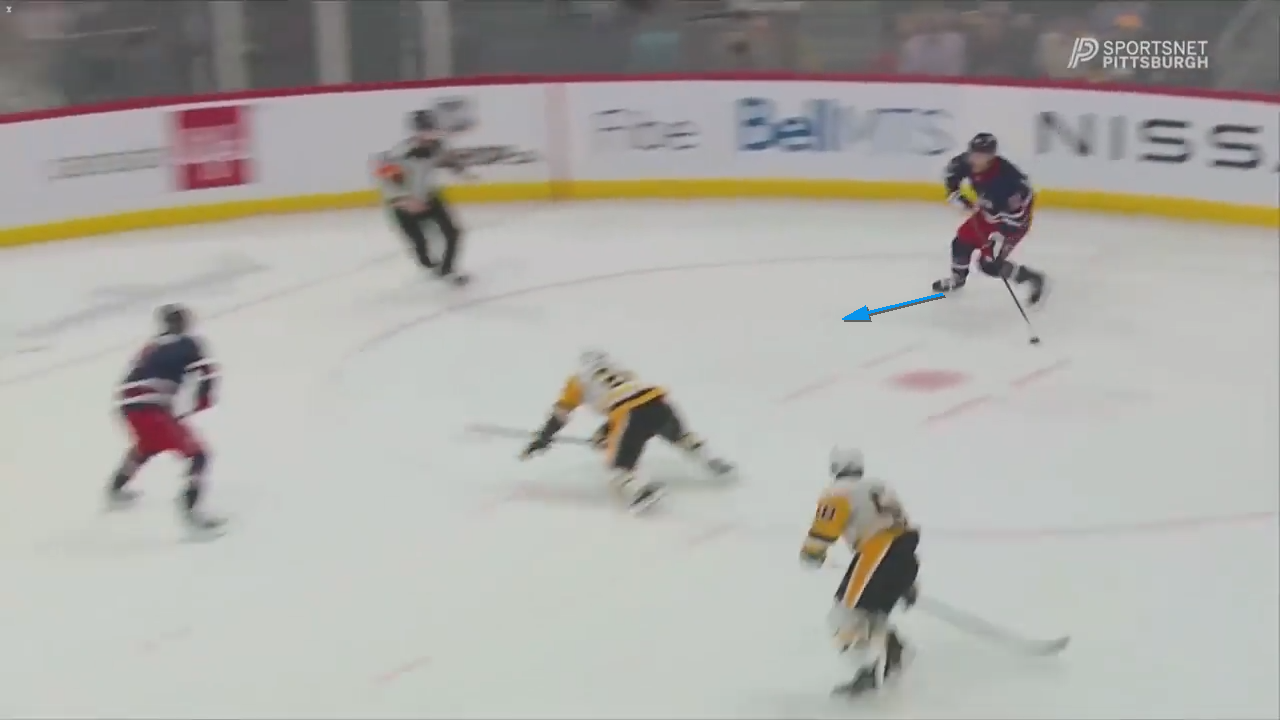
Slides in hockey allow players to sharpen their attack when challenged by opponents. By including slides, players can adjust their speed by slowing down just enough to create distance from defenders while still keeping their momentum forward. Including this skill as part of their overall game can help players accelerate quickly and seize opportunities on the ice.
Setting Up the Drill
To practice slides, start by arranging a simple drill that positions players in the neutral zone to give them ample space to build speed. Set up pylons at the top of the faceoff circles in the offensive zone for players to act as barriers or defenders. Players will use slides as they go around the pylons, simulating the need to create separation from a defender. The goal for players is to allow them to maintain momentum and enhance their delay skills while staying in their stride formation.
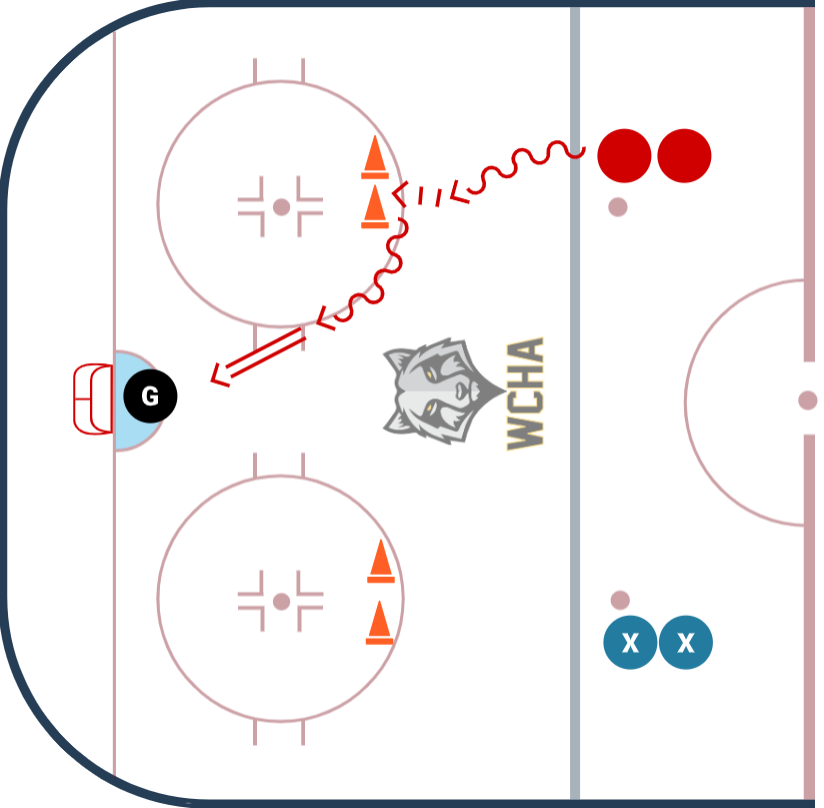
Executing the Slide
Approaching the pylons with speed, players should focus on maintaining their stride. As they near the pylons, the next step is to angle their foot slightly and shave the ice with their skate, allowing the blade to glide over the surface without applying too much pressure. This action initiates the slide. It’s important to avoid pushing too hard to ensure the movement remains smooth and controlled. By letting the skate glide, players can effectively delay their motion and create the desired separation from the defender.
Weight Distribution
Proper weight transfer will help perform an effective slide. As players start the slide, they should focus on shifting their weight to the foot that is initiating the movement. This transfer of weight allows for a more controlled and balanced slide. The "trailing foot" can help provide stability. Ensuring the right balance between both feet will allow players to maintain control and fluidity during the slide. Too much weight transfer can create a jolt, making the player lean over too far and lose balance. Too little weight transfer, won't create enough of a delay to make the slide effective while facing a defender.
Maintaining the Slide
Sustaining the slide without stopping is important for maintaining speed and control on the ice. The key is to keep the blade of the skate gliding smoothly over the surface, avoiding any abrupt movements that might cause a loss of momentum. Players should focus on a consistent and fluid motion, ensuring that they do not push too hard or dig into the ice. This smooth glide is what allows players to keep forward momentum.
Exploding Out of the Slide
Transition out of the slide creates the ability to rapidly regain speed, players must focus on pushing off with the trailing foot to generate immediate acceleration. Coordinating the push-off with a quick, powerful stride will enable players to surge forward, creating opportunities for a shot on the net or quick passes. Timing is crucial; with continuous practice this skill should become second nature, therefore the transition becomes seamless during a game.
Progressing to Double Slides
Progressing to double slides introduces an additional layer of complexity that can greatly enhance a player's delay skills. This technique involves performing slides on both feet in rapid succession, requiring even greater balance and control. To start, players should begin at a moderate speed to get comfortable with the transition between slides. As they initiate the first slide, they should prepare to quickly shift their weight to the opposite foot to execute the second slide smoothly. The key is to maintain a rhythm that allows for a transition from one foot to the other without losing too much speed or control.
Practicing double slides can be challenging, as it demands not only physical agility but also mental focus to anticipate the next movement. Players should pay attention to their body positioning and ensure their knees remain slightly bent to absorb the impact and maintain stability. Engaging the core muscles will also aid in balancing and executing each slide effectively.

